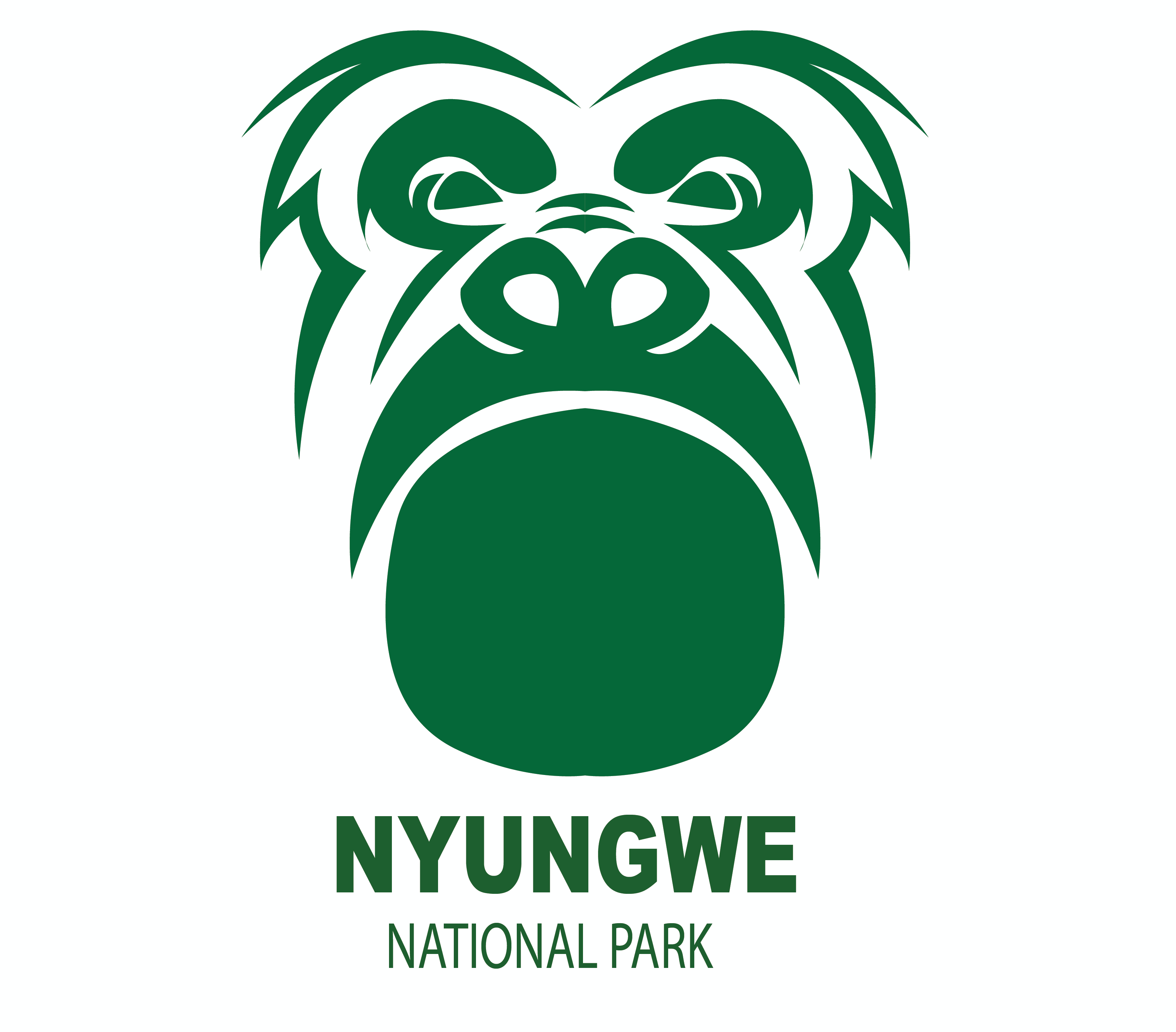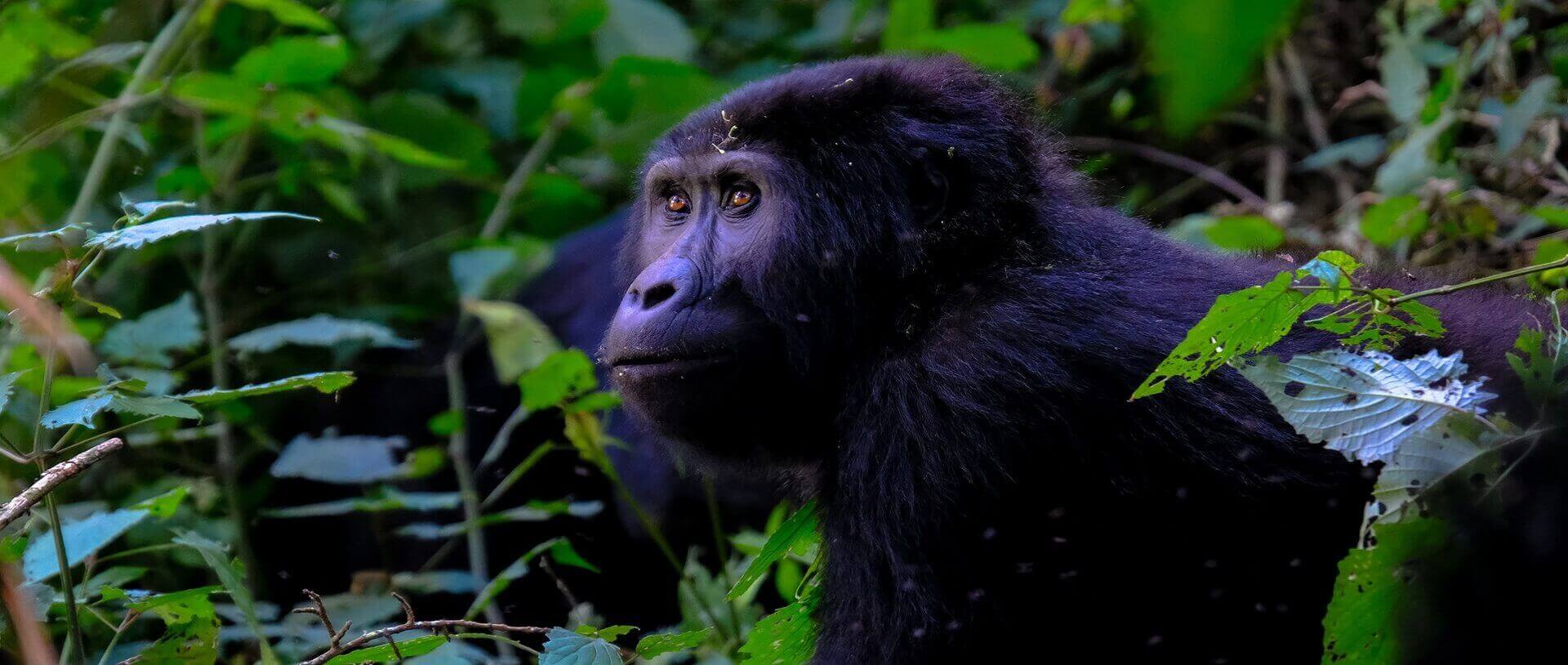Bwindi Impenetrable National Park
What do to in Bwindi National Park
GORILLA HABITUATION IN BWINDI NATIONAL PARK
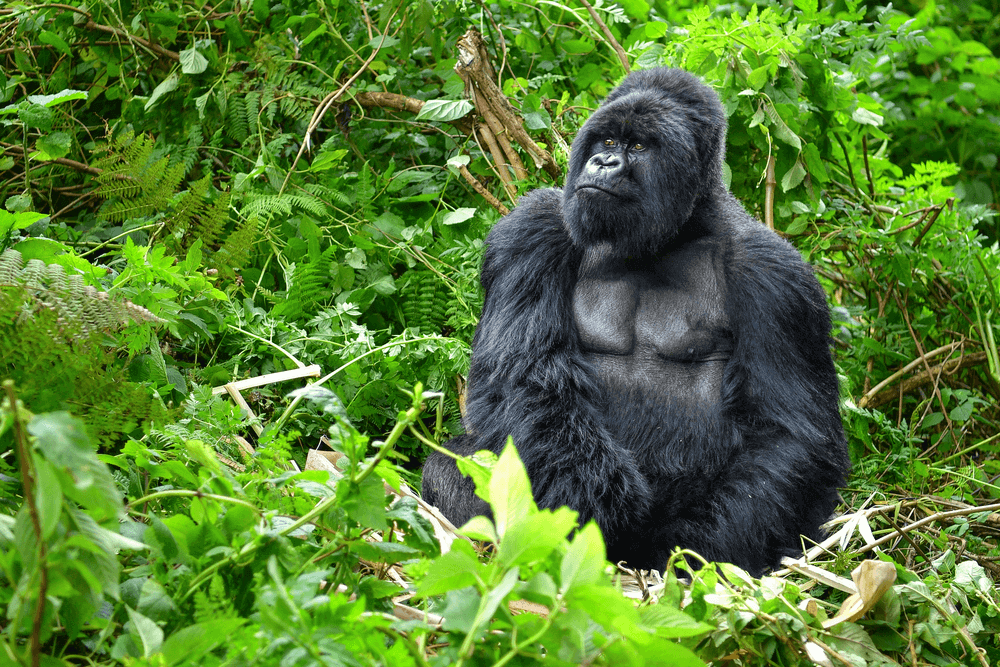
Gorilla Habituation Experience allows visitors spend more time with the gorillas.
This experience only restricts the persons to a maximum of 4 each day, thus bookings for this kind of activity are to be done 6 months prior to the actual habituation day specifically during the months of December all through to March and July to October.
Unlike Gorilla trekking that limits ones interaction with the gorillas to only an hour, Gorilla Habituation allows a person 4 hours in the company of the gorillas. Also, one spends a little bit more -US$1500 for each person needing to do the Habituation experience dissimilar from the US$600 paid for gorilla tracking.
Since this kind of experience is hardly existent in Rwanda and or the Democratic Republic of Congo, one can only find it inside the Ugandan borders at the Bwindi Impenetrable Forest National Park
Gorilla habituation is on possible in the Rushaga – Nkuringo area of Bwindi Impenetrable Forest.
The Gorilla Habituation Trailhead is in a different spot than the normal Park entrances of Rushaga or Nkuringo – Drive time from Nkuringo is 45 minutes and less from Rushaga.
Gorilla Habituation cost $1500 per Person – ONLY 4 PERMITS PER DAY!
GORILLA TRACKING IN BWINDI NATIONAL PARK
Bwindi Impenetrable National Park (BINP) is best known for its Mountain Gorilla populations and gorilla tracking.
There are 4 locations for tracking gorillas in BINP these are Buhoma, Ruhija, Rushaga, and Nkuringo. The 4 locations have a total of about 18 families as of December 2018. Tracking permits need to be bought prior to tracking by booking directly with the reservations office at Uganda Wildlife Authority (UWA) Headquarters or through a reputable tour agent. Permits can be paid for up to two years in advance.
Only 8 visitors are allowed to view the gorillas for one hour per day, participants must be aged 15 or over. and they will be accompanied by UWA guides while with the Gorillas.
Tracking the gorillas can last from a few hours to a whole day, depending on how far the group has moved since it was observed nesting up the previous evening.
The majority of the other half of the world’s mountain gorilla population are found in the Virunga complex (Volcanoes National Park in Rwanda and the Virunga National Park in Democratic Republic of Congo).
Hikes in the mountains can last anywhere from 30 minutes to 4 hours + depending on the family allocated to your group and their location. The journey back can take just as long, but you are often carried along by the euphoria you feel at seeing the gorillas!
Gorilla Permits must be booked before since they are on a very high demand all year round. Gorilla permits cost $600 in Uganda (JUNE 2019)
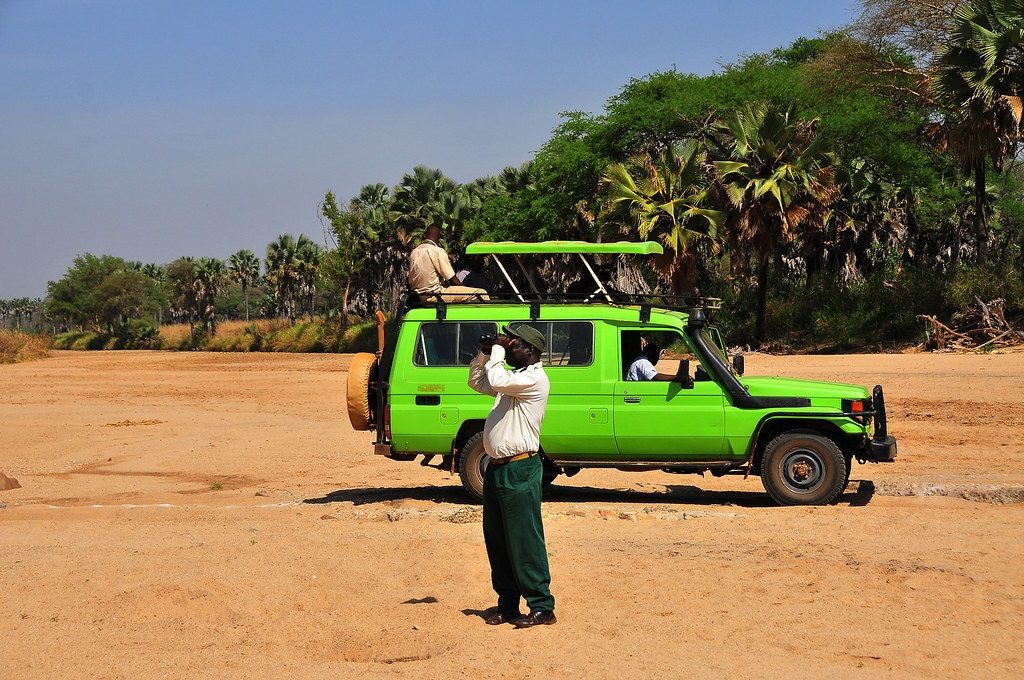
ULTIMATE BATWA EXPERIENCE IN BWINDI NATIONAL PARK
Bwindi Forest is a habitat to the Mountain Gorillas, mammals, primates, birds, trees. It’s a nature rain forest of montane low land forest which is located southwestern part of Uganda. But history behind Bwindi forest has it that Batwa were first people who lived in the forest and these are the ‘Batwa’ people also called the Batwa pygmies.
They lived, hunted and gathered in the forest, the forest provided whatever they needed to have in life, but later on where pushed out of the forest and they started living a miserable life. Owning the land to them was new since they lived in harmony in the forest but due to time everything changed because of conservation and this caused the preservation of the rain forest of Bwindi and its wildlife including birds, primates, the endangered mountain Gorillas.
And because of all what happened they became refugees, people who lacked but had, they lost their traditional ways and culture, ways of living in their normal and beloved forest. An experience of the Batwa trail gives you a life time experience to learn about their day to day life of the first people who lived in the forest spend time with people of small stature but with a big heart.
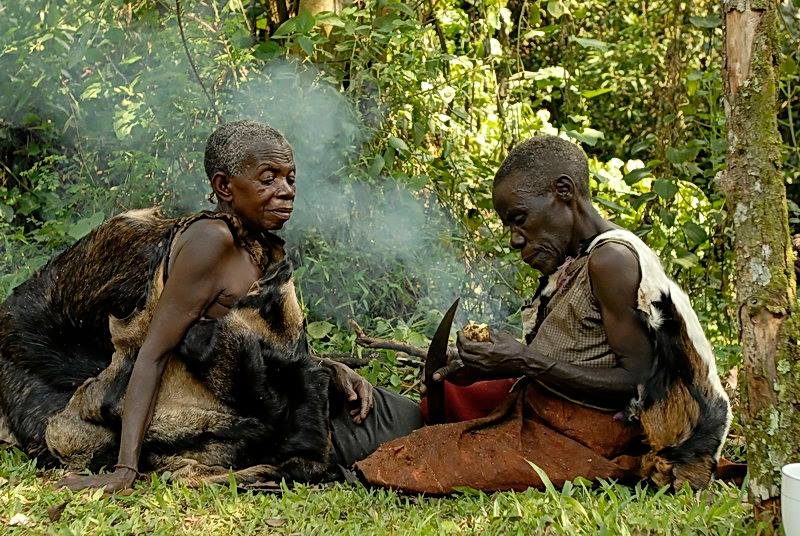
Learn as they guide you through the forest, dance, sing and storytelling of their traditional ways of farming, handling the bow, gather honey, and picking herbal medicine from roots and leaves a local way of treating the local people. Get a chance to share a local meal with them from plants and goat stew this will be another way of learning a life of Batwa people. The experience shows you how they lived grass thatched houses, caves, hunted small animals which were used for food. The trail begins with a nature walk, hike through the forest as you learn from the first keepers of the forest this takes a full day or 5 hours your simple presence will give a great honor to the Batwa people.
Bwindi impenetrable national park is not only a place where you only trek mountain Gorillas but a home where you have a right to learn about culture and ways of the first people to inherit the forest, planning your day gives you an opportunity directly to support the Batwa development. And the funds can be used to construct local schools and many more.
The Batwa live outside the forest and every region / sector including Rushaga, Ruhija, Buhoma, and Nkuringo.
Batwa trail can also be an added advantage to your Gorilla trekking to have a chance to spend with the first people of the forest book with us in advance to enjoy the unforgettable experience of Batwa.
BIRDING IN BWINDI NATIONAL PARK
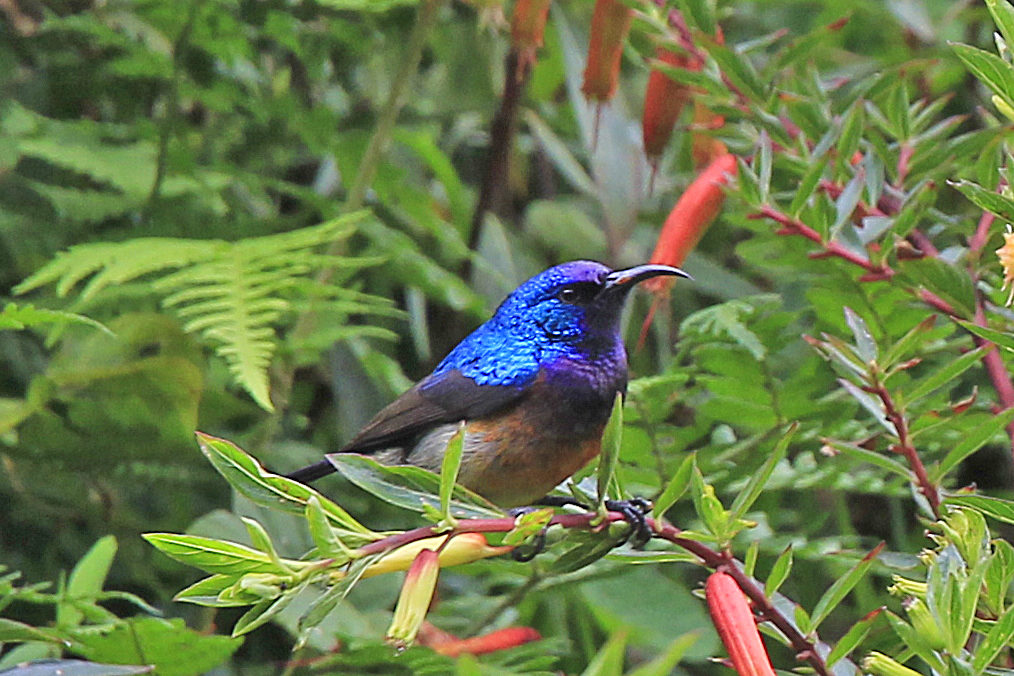
The varied habitats of Uganda’s oldest forest mean it is the ideal habitat for a variety of birds, with 350 species recorded, including 23 endemics (90% of all Albertine Rift endemics) such as the Short-tailed Warbler and Blue-headed Sunbird as well as seven IUCN red data listed species.
The varied habitats of Uganda’s oldest forest mean it is the ideal habitat for a variety of birds, with 350 species recorded, including 23 endemics (90% of all Albertine Rift endemics) such as the Short-tailed Warbler and Blue-headed Sunbird as well as seven IUCN red data listed species. Easy to see are the African Emerald Cuckoo, Common Bulbul, African Blue and White-tailed Blue Flycatchers and Red-headed Bluebill.
Birding takes place along the main trail, the Buhoma Waterfall Trail and along the bamboo zone and Mubwindi Swamp trail in Ruhija.
HIKING/NATURE WALKS IN BWINDI
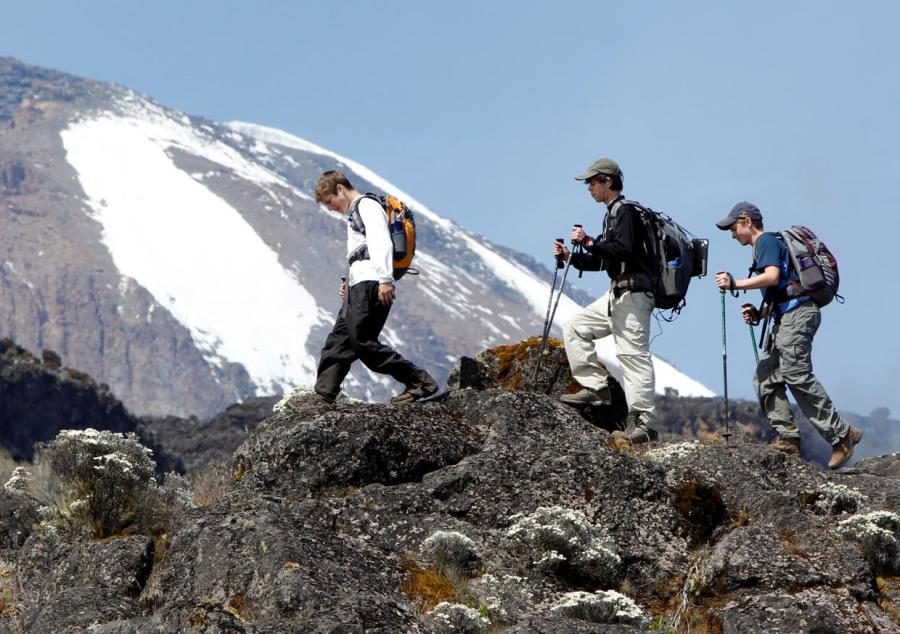
There are six main nature trails in Buhoma for those who wish to explore the “impenetrable forest”, including waterfall walks, forest walks, primate encounters, mountain views and impressive birdlife.
There are six main nature trails in Buhoma for those who wish to explore the “impenetrable forest”:
Muyanga Waterfall Walk departs from Buhoma along the River Ivi-Nkuringo trail and culminates in the sensational sight of the falls plummeting 33 meters.
Rushura Hill Walk passes through one forest shared by two countries. On a clear day you can view Lakes Edward and George and the Rwenzori Mountains as well as the conical peaks of the Virunga Volcanoes.
Muzubijiro Loop is a 6km walk around a hill, where you will encounter primates and birds and enjoy a view of the Virungas.
The Ivi River Walk is 14km and takes around seven hours. The trail passes a place known as Mukempunu – meaning “a place of pigs” – where wild pigs can often be found.
The Buhoma-Nkuringo Trail takes three to four hours, and crosses right through the park, connecting the two villages and offering impressive views of the misty hillsides as you ascend the hills towards Nkuringo. You can leave our luggage with your driver, who will meet you at the other side. This trail can also be completed as part of the Ivi River Walk.
The Habinyanja (Railegh) Trail takes 4-6hrs. After crossing the Munyaga River, it takes in a fairly steep ascent of the Habigorogoro and Riyovi Ridge overlooking Buhoma River. Found along this trail is the legendry “African Corner” named after a rock piece depicting a map of Africa. Following the steep ascent, keen hikers can enkoy a more relaxed gentle slope to the mighty Habinyanja swamp. Birders on this trail should watch out for the Pel’s Fishing Owl, African Black Duck and Black Bee Eaters, among others.
.


